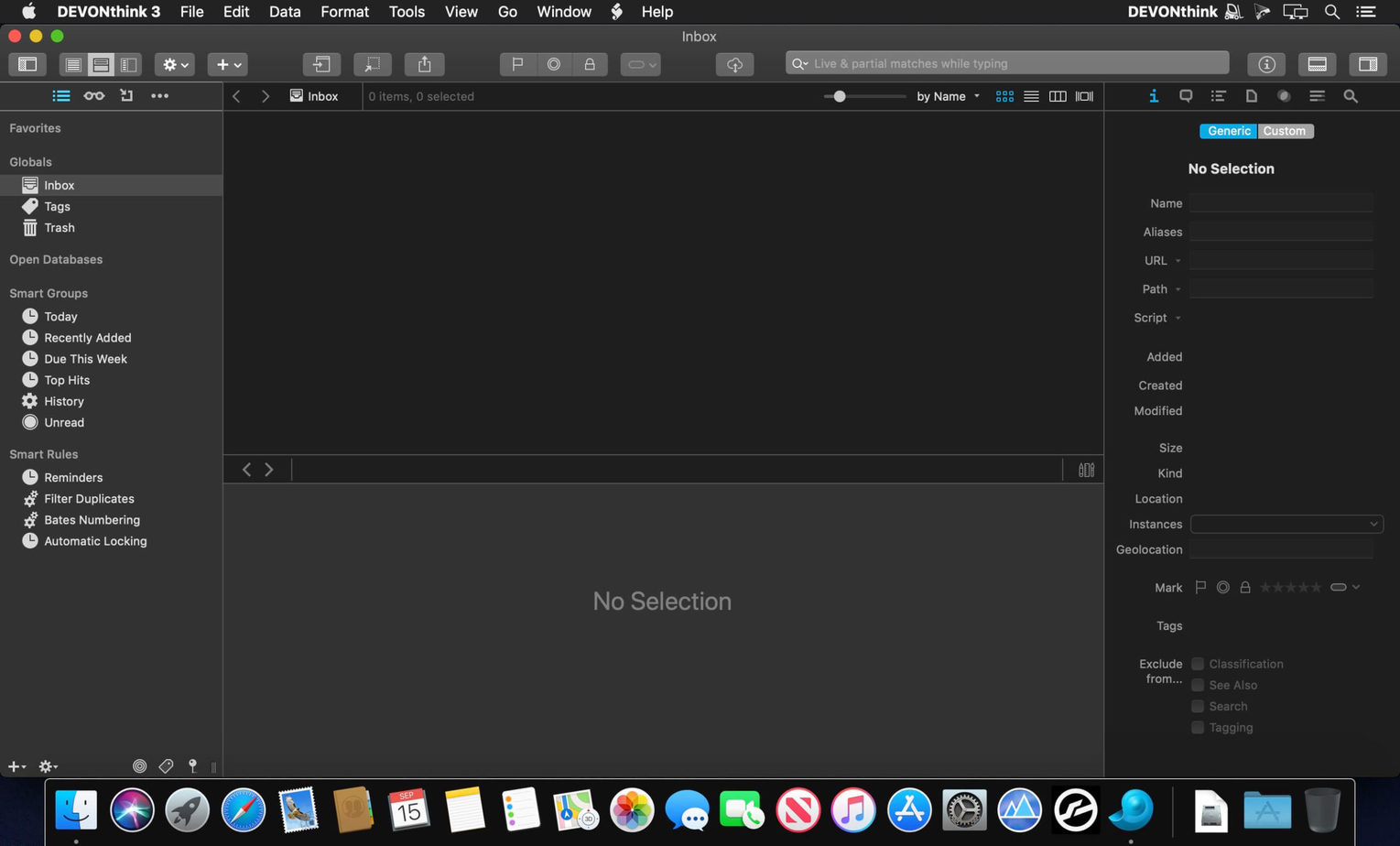

For now, though, the easier navigation and quick search make DEVONthink a nice alternative to lugging thick files off to depositions.Someone says DEVONthink is a great notes program product, and some another one think it is a file management system. I’m no DEVONthink ninja, so I haven’t even tapped into that power yet. Typing the person’s name into the search box revealed a few documents almost instantly.ĭEVONthink’s real power is in its artificial intelligence, and how it builds relationships between documents. In the first case, I quickly needed to call up information about a person mentioned by one of the witnesses. The ability to search for specific content within documents (if those documents have been OCR’d) came in handy in the first case. Still, after one attorney claimed that he hadn’t been asked for certain information, I was quickly able to locate discovery requests where he had been asked for the information in question.

My second case involves five parties, and I’ve decided that in the future I will give each party its own discovery subgroup, for example, instead of lumping all discovery together. I did learn, though, that I probably need more subgroups to be able to find documents faster. I still had to have a rough idea what document I wanted to locate, but that view made it quick and easy to jump between documents. With respect to navigating to files, I used a three pane view, with the groups on the left, the list of documents in the middle, and a preview window on the right.

The two areas it really helped with were navigating to files, and searching for content within files. How did it work? Very well, although I still have some work to do, as I’ll explain below. The second case involved 660 documents spread over 19 groups (with more to come, since that case began prior to when my firm scanned every document we’re going back and getting old documents scanned prior to trial). The first case involved 207 documents spread among 11 groups. Fortunately, our case management system made that easier, as I could export documents by classification. I organized the documents into some basic groups (pleadings, discovery, investigation, etc.). Prior to each deposition, I created a separate database for the case, and moving the documents into the database.

That doesn’t translate well to managing documents during a deposition. We have a high-end document management system at my firm, but the system doesn’t work well when off of our network. This is the first time that I’ve used DEVONthink for legal work. I was involved with a few longer depositions this week, and copied all of the documents for those cases into DEVONthink, and then took my MacBook to the depositions. Specifically, I wondered if I would benefit from using DEVONthink in my legal practice.
DEVONTHINK PRO OFFICE TRIAL MAC
The latest episode of the Mac Power Users podcast took a detailed look at DEVONthink, and got me thinking about whether I was using the app to its fullest potential. I’ve been using DEVONthink Pro Office for a few years now, but only as a filing cabinet for documents that I don’t want to trust to the cloud.


 0 kommentar(er)
0 kommentar(er)
